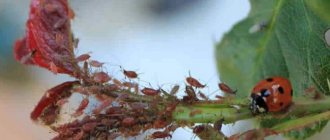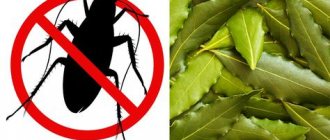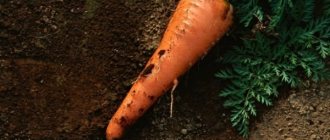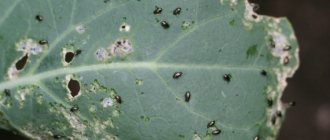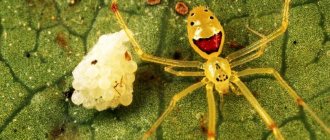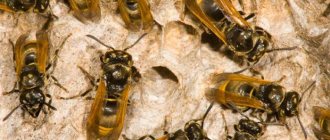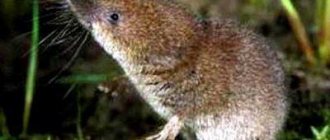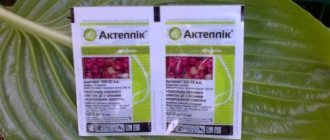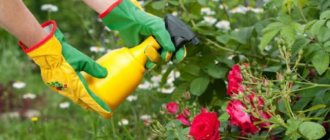What is tobacco infusion used for?
Tobacco is often used as a natural supplement. To make an infusion for this purpose, tobacco dust is used. As a rule, it remains after tobacco production as waste. It can be found on store shelves in gardening departments. Tobacco waste contains phosphorus, potassium and nitrogen. They are so necessary for plants for intensive growth.
Studies have shown that tobacco-based products do not contain hazardous substances and alkaloids that can harm the fruit.
The infusion is non-toxic, has a positive effect on microorganisms in the soil and nourishes the plant with minerals. Thanks to this, the yield increases significantly. This infusion can also be used to fertilize indoor plants. It is especially effective during transplantation for better adaptation.
An infusion of tobacco will also help against pests and parasites: aphids, caterpillars, leaf rollers and others. The product is non-toxic, does not penetrate deep into the plant and does not pollute the soil, unlike chemical insecticides.
Control of various pests
In this section we will talk about the practical use of tobacco dust in specific conditions for controlling pests of gardens, vegetable gardens and indoor plants.
- So, if you notice a cruciferous flea beetle, then pollinating the plants will help to get rid of the parasites.
- To destroy the moth, the plantings are sprayed with infusion.
- Spraying is also carried out when a copperhead is detected. It is advisable to use this method during the period of bud isolation. And if the garden has already faded, fumigate it. It is better to do this in calm weather in the evening.
- Aphids very often devour crops and plants. You can destroy it with the help of infusion of tobacco dust. But this is unlikely to be done with just one event: everything should be repeated in a week, perhaps using the same technique for the third time. It all depends on the degree of pest infestation.
- If spider mites have settled on plants, then a decoction should be used.
- The cabbage fly causes many problems for gardeners. Sprinkle the soil around the plants with tobacco dust along with slaked lime.
- It's not easy to kill slugs. This will require a whole range of measures. It is noteworthy that they have to be destroyed in the late afternoon, as they move onto the plants. Consequently, we pollinate the soil with tobacco dust along with lime. However, as they say, it is not possible to destroy slugs in one go. They are designed in such a way that they will shed the drug along with the mucus. But after the second treatment they will no longer be able to survive. No wonder they say: perseverance is always rewarded.
It is also important to know how to use other pest control methods, which you will find in our previous and subsequent articles.
From pests
Tobacco infusion against pests is quite effective. To prepare the preparation, stems, dust and leaves are used. The main active ingredient is alkaloids. It will help get rid of such parasites as: aphids, copperheads, thrips, leaf roller caterpillars, cabbage moths, apple and fruit moths, onion flies, secretive moths, lacewings, moths, ringed silkworms, cruciferous flea beetles, spider mites, rapeseed and cherry sawfly larvae, whiteflies, slugs and even household moths.
Compound
- tobacco – 400 g;
- water – 10 l.
Preparation
- Grind the raw materials.
- To fill with water.
- Leave for 2 days.
- Squeeze out the liquid and strain through cheesecloth.
- Dilute with the same volume of water.
Used for pest-infected plants by spraying.
Spraying recommendations
For spraying with tobacco infusion to work, it is worth considering the following recommendations:
- before processing, liquid soap is added to the infusion at the rate of 40 g per 10 liters of water, which helps to better fix the product on the crops;
- try to spray the infusion when spraying along the tops of trees and bushes, because it is in this place that there is a high concentration of aphids;
- It is normal for plant leaves to change after treatment - a brown tint will be added due to the high concentration of the infusion.
Edible table salt
Will help against Californian scale insects and
, will drive out the ants.
Dissolve 1 kg of table salt in 10 liters of water.
How to use it?
Spray fruit trees after leaf fall or in the spring before buds open.
Approximate consumption rates:
- for a seedling and a young tree - 2 liters of solution;
- for an adult fruit-bearing tree - up to 10 liters;
- per raspberry bush - 200 ml;
- for a currant and gooseberry bush - 1.5 l.
From ants
sprinkle salt on their “paths” and the anthill itself.
From aphids
Despite the large assortment of home and store-bought remedies for parasites, tobacco infusions for aphids occupy one of the leading positions.
Compound
- tobacco dust – 400 g;
- water - 10 l;
- soap – 40 g.
Preparation
- Pour water over tobacco dust.
- Leave for a day.
- Stir several times.
- Strain through double cheesecloth.
- Add soap.
Gardeners advise spraying against aphids every 5-7 days to remove all pests. To improve and accelerate effectiveness, you can alternate preparations from different types of raw materials.
Methods of application
Three main methods are in common use. This is, first of all, fumigation, pollination of soil and plants, and the use of decoctions.
Fumigation
Quite a common method. By the way, it is often used to protect fruit trees from frost, when the plantings are about to bloom and the air temperature is approaching zero. Only brushwood and firewood are usually used, but gardens can also be enveloped in the smoke of tobacco dust. The effect will be double. After all, there are no restrictions for its use. But there is still one caveat.
Here gardeners will have to make difficult choices. Still, it is advisable to protect gardens from pests better after flowering. After all, pollination of flowering trees in your garden is also an important agrotechnical technique.
So how to practically carry out the fumigation method?
- First you need to make a fire.
- You need to take a wider container, light the collected brushwood, old branches, and tree bark.
- A fire appears and flares up a little, then sprinkle the fire with tobacco dust.
The fumigation method is successfully used not only in gardens. It is also suitable for greenhouses and small greenhouses. But it is recommended to carry it out at least 2-3 days before sowing or planting the plants. It can be used against aphids, whiteflies and thrips. It is better to leave the enclosed space during treatment. And this can be from one hour to two.
Decoction
It is prepared like this: take half a glass of powder and pour it with a liter of liquid, boil over low heat for about 30 minutes. The level is replenished to the required level. It is also customary to add boiling water.
At the end it would be nice to add laundry soap - the product we prepared will stick to the leaves better. The next day, the broth should be filtered and spraying can be done.
Pollination
Usually it is carried out directly only with powder or together with ash. Slaked lime is also added. All components must first be mixed in equal proportions.
Tobacco dust
From waste in the production of tobacco factories, packaged packets of tobacco dust are produced for sale. Thanks to the rich content, plants receive improved nutrition and soil activity increases. In addition to the fact that tobacco dust is used when digging the soil and planting crops by adding it to the ground, a common method of application is an infusion of tobacco dust.
Tobacco dust contains nicotine, which fights parasites during the growth of garden plants. An infusion of tobacco dust is useful for protecting tobacco, cabbage, fruits and berries and flowers.
Compound
- tobacco dust – 400 g;
- a bucket of water.
Preparation
- Fill the main component with water.
- Leave for at least a day.
- Stir occasionally.
- Strain through cheesecloth.
- Dilute with water 1:2.
- Add a little soap.
Apply immediately after preparation. Spray at least 2 times a day. Take a break for several days between procedures.
An infusion of tobacco dust works effectively against pests when used correctly:
- to combat copperhead, spray fruit trees during the period when buds appear;
- when removing aphids, treat with infusion by spraying at intervals of a week;
- to combat gooseberry moth and raspberry beetle larvae, carry out treatment during bud break;
- when spider mites appear, spraying is carried out immediately after identifying the pests, and again after 7 days;
- from fleas - all crops are treated once a month;
- for cabbage flies and onion hoverflies, treatment is carried out 2 times: in the first half of June and at the end of August.
Preparation of decoctions and infusions of natural insecticides
For decoctions and infusions, the aerial parts of plants, fresh or dried, are used, collected before flowering or during the period from the beginning of seed ripening to harvesting. The underground part is always harvested in the fall and is also used fresh or dry. Below are several examples of preparing decoctions and infusions using hot and cold methods. Using other insecticidal plants for decoctions and infusions, you can use the given amounts of ingredients.
To prepare 10 liters of working solution using the hot method from fresh above-ground parts of insecticidal plants, finely chop 300-400 g of plant mass, add boiling water to a full bucket, and leave for 4 hours to 24 hours. Sometimes the mixture is boiled covered for 20-30 minutes over low heat. The cooled solution is filtered through a coarse and then a fine sieve and sprayed on 1-2 plants. If plant burns do not appear within a few hours (sometimes they wait a day), spray the entire crop with the prepared solution. If the leaves are wilted or spots appear, add 2-3 liters of water to the solution (reduce the concentration of the solution). When preparing solutions from dry mass, its amount is reduced by half.
You can prepare a decoction of celandine to treat all plants against gnawing pests. Pour 400-500 g of fresh above-ground mass of celandine or 200-250 g of dry mass with water and boil for 20-30 minutes under a lid over low heat. Cool, filter and spray the plants. Spraying is repeated after 4-5 days. It is necessary to work with celandine very carefully. All parts of the plant are poisonous
Attention! It is better not to use poisonous plants at home.
You can prepare extracts or infusions using a cold method. For the concentrate, the mixture is prepared as follows. For 10 liters of water use 500 g of yarrow, 250 g of dandelion and tansy, you can add 250-300 g of milkweed with roots, 250-300 g of nettle. The mixture of herbs is infused, stirring, for 5-7 days. The resulting concentrate is filtered. 1-2 liters of concentrate are diluted in 10 liters of water and sprayed on the crops. You can prepare a different composition, but select the collection so as to cover as many different types of pests as possible.
Preparation of a solution of insecticides from plants.. Ric Bessin
Soap or other adhesives are added to all types of decoctions and infusions before processing plants.
Some plants can be used as live insecticides in plantings between crops. Thus, root secretions of tagetes (marigolds) or calendula (marigolds) protect the root system of vegetables from damage by nematodes.
In the row between vegetable crops, 2-3 plants per square meter are planted. m or between rows. You can plant a garden bed with calendula. In the fall, collect, dry and use in the form of decoctions for the next year.
Infusions can be prepared coldly from one type of insecticidal plant.
Nettle (0.8-1.0 kg), collected before flowering, is finely chopped, poured with 10 liters of water and left for 5-8 days. The fermented mass is filtered, 5-8 liters of water are added. Used against aphids.
Before summer (flight), white moths, moths, and cabbageweeds prepare an infusion of burdock. Fill 1/3 of the bucket with fresh burdock leaves and fill to the brim with water. Leave for 3-4 days. Strain and process the cabbage with the resulting solution after 2-3 days for 3 weeks.
The copperhead, aphids and mites die from the infusion of horse sorrel roots. Finely chop 250-350 g of roots and add 10 liters of water. Leave for 3-4 hours, strain. Treat plants 2-3 times every 3-4 days.
From general recommendations. Before flowering, garden and vegetable crops are treated with working solutions every 5-7 days, sometimes more often. During the flowering period, no treatment is carried out so as not to interfere with pollination. From the second half of the warm season, during the period when fruits begin to grow and before harvesting, the frequency of treatments is reduced by 2 times. It is better not to use decoctions and infusions of poisonous herbs in dachas and home areas.
Precautionary measures
Despite the fact that tobacco infusion against pests is non-toxic, it is worth adhering to some safety measures. Since careless use can cause health problems, you must:
- wear a cotton-gauze bandage to protect the respiratory tract;
- rubber gloves are used to protect the skin of the hands;
- eye protection glasses;
- If the drug gets on the skin and mucous membranes of the eyes or mouth, rinse thoroughly under running water.
- while carrying out work to get rid of pests, you must not smoke, drink or eat food;
- at the end of the procedure, wash your hands and face well with soap;
- Children, pregnant and lactating women, as well as people with allergies are not allowed to work with the infusion;
- preparations of dried raw materials for the drug must be done with gloves and scissors;
- store the prepared raw materials with signed labels, because not only fresh tobacco is used to make the infusion, but also dried tobacco;
- The dishes used for making the infusion must be washed with a solution of soda ash or wood ash, and then rinsed with plain water.
Thanks to tobacco infusion, you can get rid of almost any harmful insect for home crops. It is important that this method is not only effective, but also economical.
Fumigation of plants with tobacco smoke
A method that will certainly get rid of aphids, honey grass, moths and other pests is fumigation with tobacco smoke.
To avoid scaring off pollinating insects, be sure to wait until the trees have finished flowering!
There are two options for fumigation.
On open air
The event is held in the evening, in calm, cool weather. A metal bucket or grill is suitable for this. Branches, bark, wood chips, and debris are set on fire in a container, and when the fire flares up, tobacco dust is added on top. The container is installed between the trees. Treatment duration is from 30 minutes to 2 hours.
Treatment of greenhouses and greenhouses
Fumigation is carried out for preventive purposes (no later than 3 days before planting) or to destroy pests. In a closed space it is better to use special smoke bombs; the processing time is 2-3 hours. Leave the greenhouse during the procedure.
For all garden treatment options using tobacco dust, safety rules must be followed, as dust can cause an allergic reaction. Before starting work, protect your nose and mouth with a special mask or respirator, and put on rubber gloves on your hands.
Properties of tobacco
An infusion of tobacco leaves has long been used by experienced gardeners to combat unwanted insects. This product is an excellent alternative to commercial pesticides. These properties of tobacco are explained by the content of the alkaloid nicotine, which is very toxic to pests. Once in the parasite's body, nicotine blocks acetylcholine receptors, which causes the death of the insect.
Tobacco infusion, treatment, fertilizer and tincture recipes
Growing tobacco Everyone knows about the dangers of tobacco to humans. But most people don’t know much about how beneficial this plant can be if used correctly. Decoctions, infusions, tinctures and compresses from tobacco have long been used to treat a variety of ailments. The tincture is even known to be used as a cure for cancer. Tobacco is no less useful for agriculture. Tobacco infusions and decoctions are a wonderful organic insecticide, as well as fertilizer for the garden.
Is tobacco a cure for all diseases?
From the 16th to the 20th centuries, tobacco spread throughout Europe as a medicine for almost all diseases. The scattered evidence of the health risks of smoking was greatly strengthened by research in the 1940s and 1950s.
Portugal initially became the center of tobacco distribution in Europe. As anthropologist and cultural scientist Konstantin Bogdanov reports in his book “Everyday Life and Mythology”:
“Rumour about the healing properties of the miracle plant is spread by traders and special envoys who come to Portugal in anticipation of the goods. Among such envoys, a special role belongs to the Frenchman Jean Nicot, who became an advocate and promoter of the new remedy after successful self-medication. Suffering from headaches, Niko is treated using a poultice of tobacco leaves and juice. With the same composition, he treats a facial ulcer in one of his friends, and also heals a wound after an accidental amputation of a finger. By distributing his own drug to the luminaries of medicine and politics (in particular, Catherine de Medici), Nico consolidates tobacco’s emerging reputation as a panacea, and his name itself eventually becomes a common noun in the scientific name of tobacco (nicotine).”
The fashion for tobacco reached its apogee by the 70-80s of the 16th century: for example, the Spanish doctor Monardes gives a long list of diseases that can be cured with tobacco (cancer, colds, headaches, asthma, stomach cramps, gout, worms, women's diseases ).
While there is general agreement on the healing properties of tobacco, leading doctors in Western Europe argue only about which of the possible ways of using it is considered preferable, as well as about what the tobacco itself should be - fresh or dried, cold or hot, whether it should be used in pure or mixed, in the form of leaves or powder, whether it is smoked, snorted, inhaled or drunk as an infusion.
The use of tobacco as a medically recognized healing agent remained popular until at least the mid-17th century.
Bartholomew Schimper wrote in 1660 that smoking shrinks the brain and thereby “squeezes” excess moisture out of it.
Hopes for the healing effectiveness of tobacco especially increase during outbreaks of epidemics. Based on written and archaeological evidence, smoking was one of the most common preventive measures during the London plague of 1614, the plague epidemic in Denmark in 1636, and the plague epidemic that swept through most of Western Europe in 1665.

